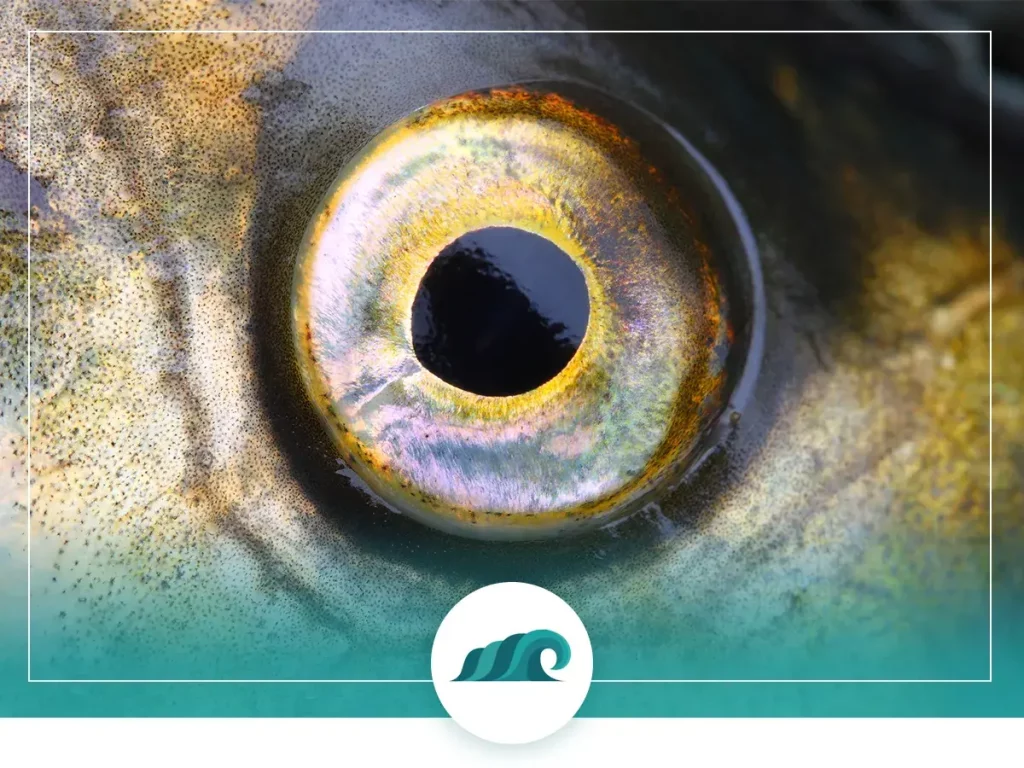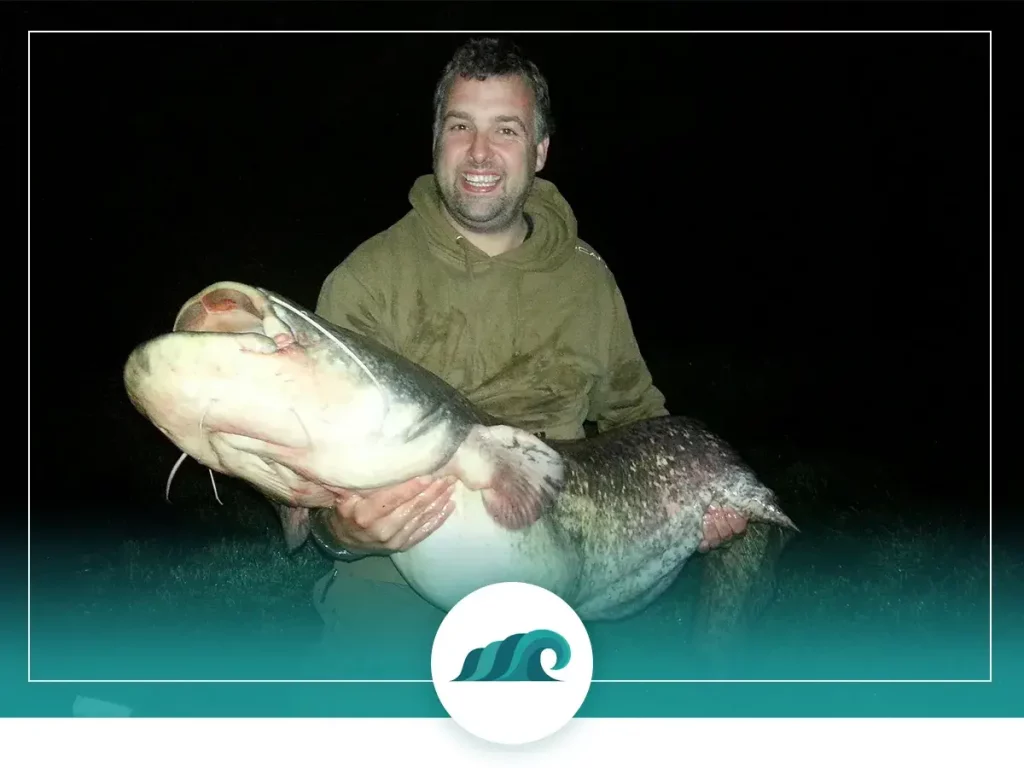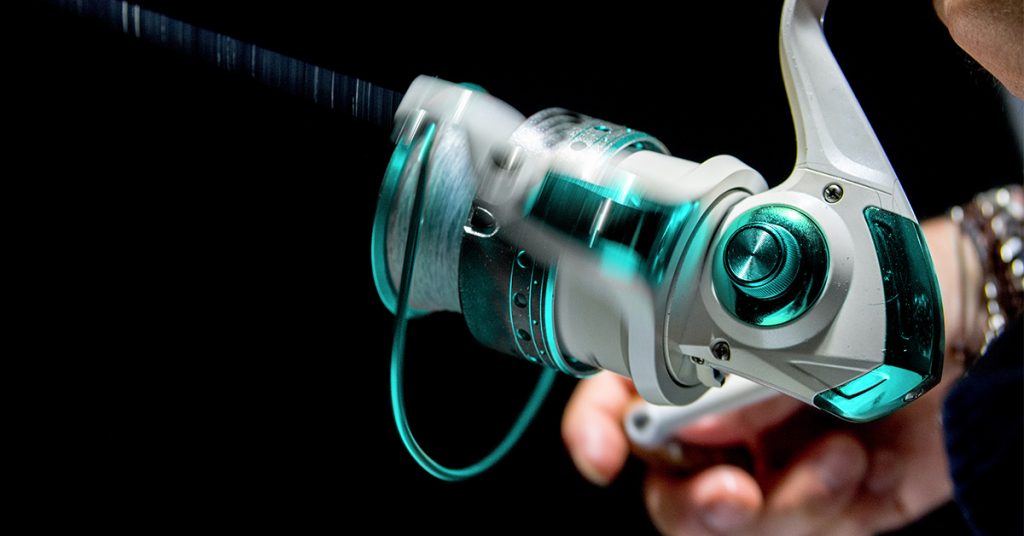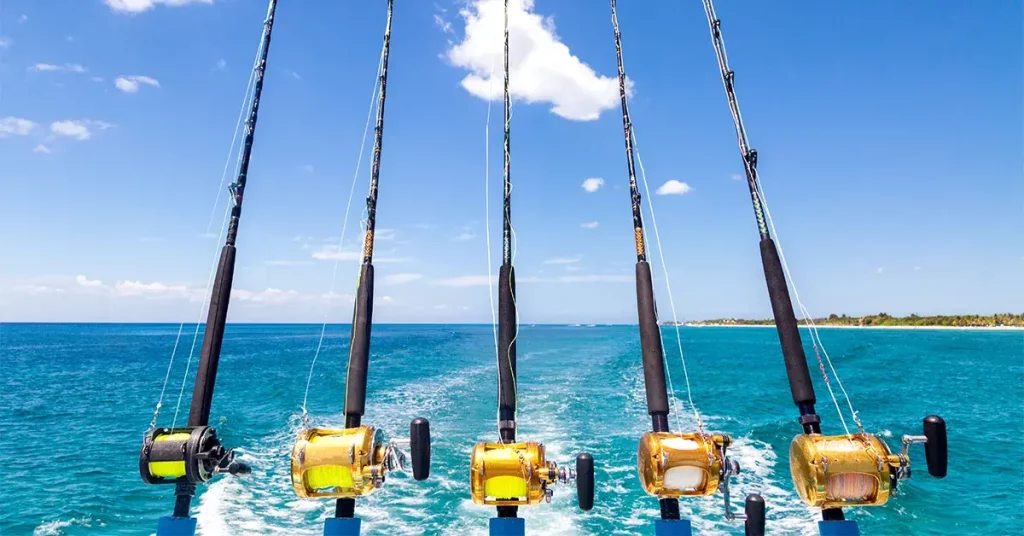Have you ever wondered to yourself “Can fish see in the dark?” How are they able to navigate murky dark waters that humans would find blinding?
Many anglers, aquarium owners and curious observers have wondered about this exact topic. Are fish able to see lures or bait in the dark? And if not – how are they able to detect bait and bite onto it? If you own an aquarium, how should you manage the lighting situation so your fish are as comfortable as possible?
In order to answer these questions we’ll delve into some of the biology behind fish vision, the sensory perceptions of different fish species – and how you can take advantage of this as an angler.
Fish Vision Explained

Fish vision is different from terrestrial animal vision. This is because light waves behave differently in the aquatic environment that fish inhabit.
Water absorbs some wavelengths of light faster than others. For example, red and orange light is absorbed within the first 30 meters of water, while blue and green light can penetrate all the way down to 200 meters below the surface. That’s why deep-sea fish are often red colored – the lack of red light perception makes them appear black, and thus less visible to predators and prey.
Water clarity can also be a major factor in what fish are able to see. Depending on the time of year, wind, rain, algae, dam water and snow melt can change the water clarity from ‘gin clear’ to dark and murky. In the most pristine water conditions, fish are only able to see about 100 feet away. In murkier water, their vision is limited to a few inches, similar to being in a perpetual dense fog.
Structurally, fish eyes are similar to our own. The major difference is that fish lenses are generally more dense and spherical than human eyes. These rounded lenses give them better peripheral vision. They also are able to bend light and focus it on their retinas better than we are – which makes them able to take advantage of low light situations.
Fish Vision at Different Depths

Fish that live in the surface waters within 200 meters of the surface, known as egipelagic fish, primarily use their vision for hunting prey and escaping predator fish. These fish typically do not have adaptations for ultra-low light conditions. Some examples of fish at this depth would be herring, mackerel, tuna and most sharks.
The next level below is known as the mesopelagic zone. This zone extends from 200 meters down to 1000 meters below the ocean’s surface. Light levels are greatly reduced at these depths and as a result fish here have large eyes with big lenses, which provide sensitivity to the smallest light signals.
Many species have upwards facing eyes to detect prey animals silhouetted against the dim light above them. This adaptation means they sacrifice lateral (sideways) vision in favor of terminal vision. Some fish that live at this level are lanternfish, barreleye and Bigeye tuna.
Below this level it’s completely pitch black. No light from the surface can penetrate this deep. This layer is known as the bathypelagic or midnight zone.
Fish living here have highly specialized adaptations to deal with the lack of light and high pressure. They do not rely on vision, and instead operate on sense of smell, sound and their lateral line. Many also incorporate bioluminescence (producing their own light) to hunt or find a mate. Some examples of fish residing at these depths are the anglerfish, bristlemouth, fangtooth and barracudina.
How Do Fish See in the Dark?

It’s easy to assume that because we have a hard time seeing in the dark that other animals have the same issue. Fish have a number of adaptations that make them less dependent on vision and better able to navigate in low-light environments.
Many fish have a unique sensory system known as a lateral line that runs across the length of their bodies. This is a series of organs (called neuromasts) which detect movement, vibration and pressure change in the surrounding water. It plays a key role in spacial awareness, hunting for prey and schooling behavior.
As mentioned previously, many fish also have good night vision due to their large rounded lenses. This means they are able to take advantage of the light reflected by the moon and stars to see.
Other fish are able to sense their environment using magnetoception and chemoreception. Catfish use chemoreception to “taste” and “smell” everything in the water around them using their incredible sense of smell. Sharks and rays are able to use special sensory organs known as ampullae of Lorenzini detect slight variations in electrical fields in the water around them.
How to Catch Fish at Night?

Catching fish at night is a different beast from daytime fishing.
Fish behave differently at night – and depending on the species they may be more active than during the day. Walleye, carp, and catfish are all particularly active during the nighttime hours.
During the summer months many fish species are sluggish from the heat during the day, but come out to feed at night. In many areas, winds tend to blow less during the night, which means calmer fishing waters.
If you’re fishing spot is busy with boats and Jet Ski’s during the day, then night fishing is a great opportunity to fish in calm undisturbed water – plus you get to beat the heat!
Fishing at night means being properly prepared – you don’t want to be searching around in your tackle box for lures in the dark! Rigging up several rods in advance is a smart move. Also, bringing a fishing headlamp, a well-organized tackle box, and a pair of fish grippers will ensure you’re well prepared to deal with any situation.
Fish also feed differently in the dark than during the day. They rely more on their lateral line to detect movement and vibration in the water. This means noisy, moving bait like chatterbait, buzzbait or any bait with moving parts will help you catch more fish. Make sure to keep the bait moving to attract more fish.
If you’re new to night fishing, you’ll quickly find it’s more about feeling than vision. Not only do the fish rely more on their sense of feeling – so will you!
Can Aquarium Fish See in the Dark?

If you have pet fish living in an aquarium you might be wondering how best to light the tank. In general fish like 12 hours of light followed by 12 hours of dark, similar to what they would experience in the wild. Some fish species vary in how much light they like, so make sure to research your particular species.
Fish will go into a dormant state at night where they lower their brain activity by half so they can rest. This allows them to continue swimming and avoid bumping into objects while they’re resting.
Keep in mind that algae will grow faster if you keep light on the tank constantly. So turning off the lights at night won’t just help your fish rest, it will also discourage algae overgrowth.




